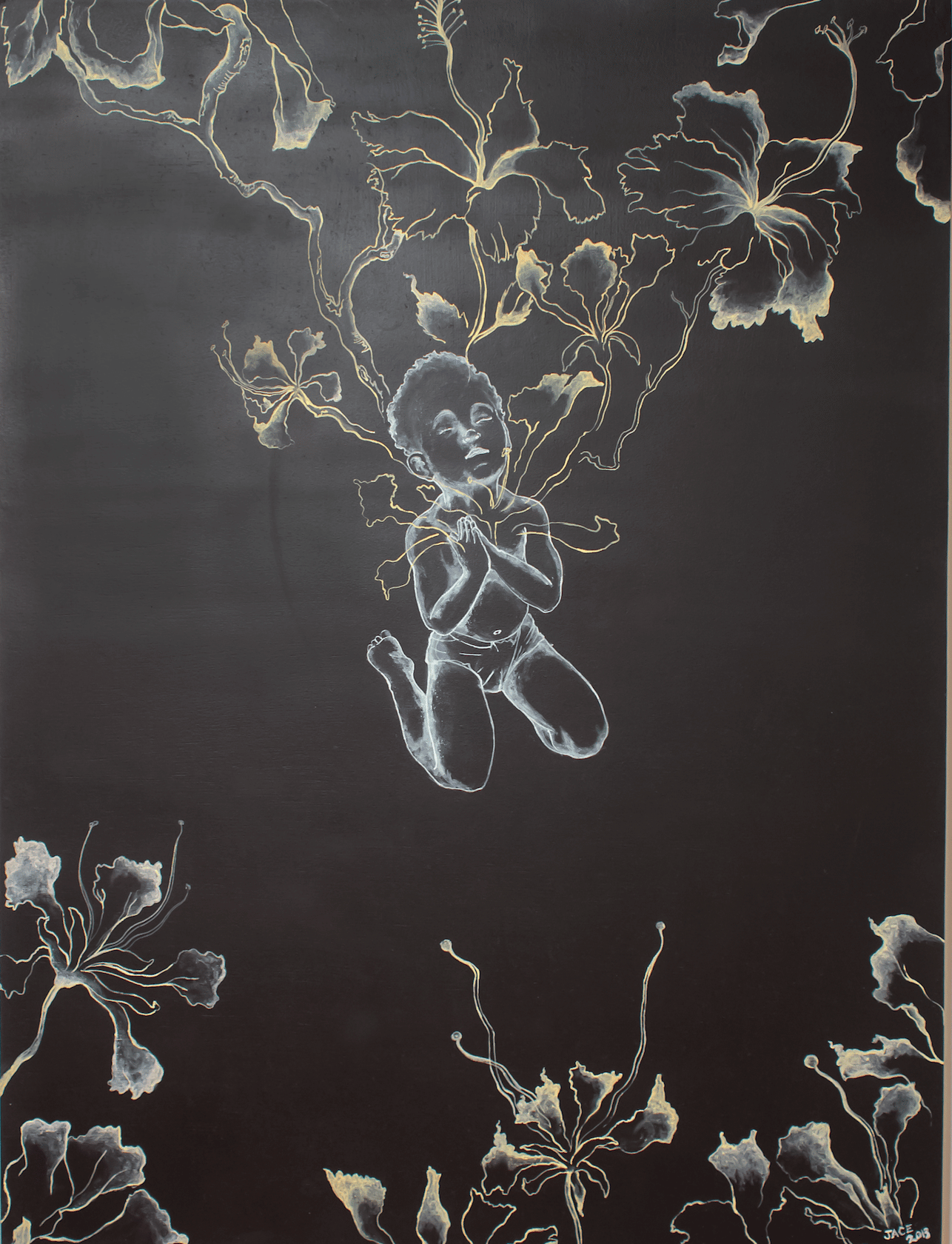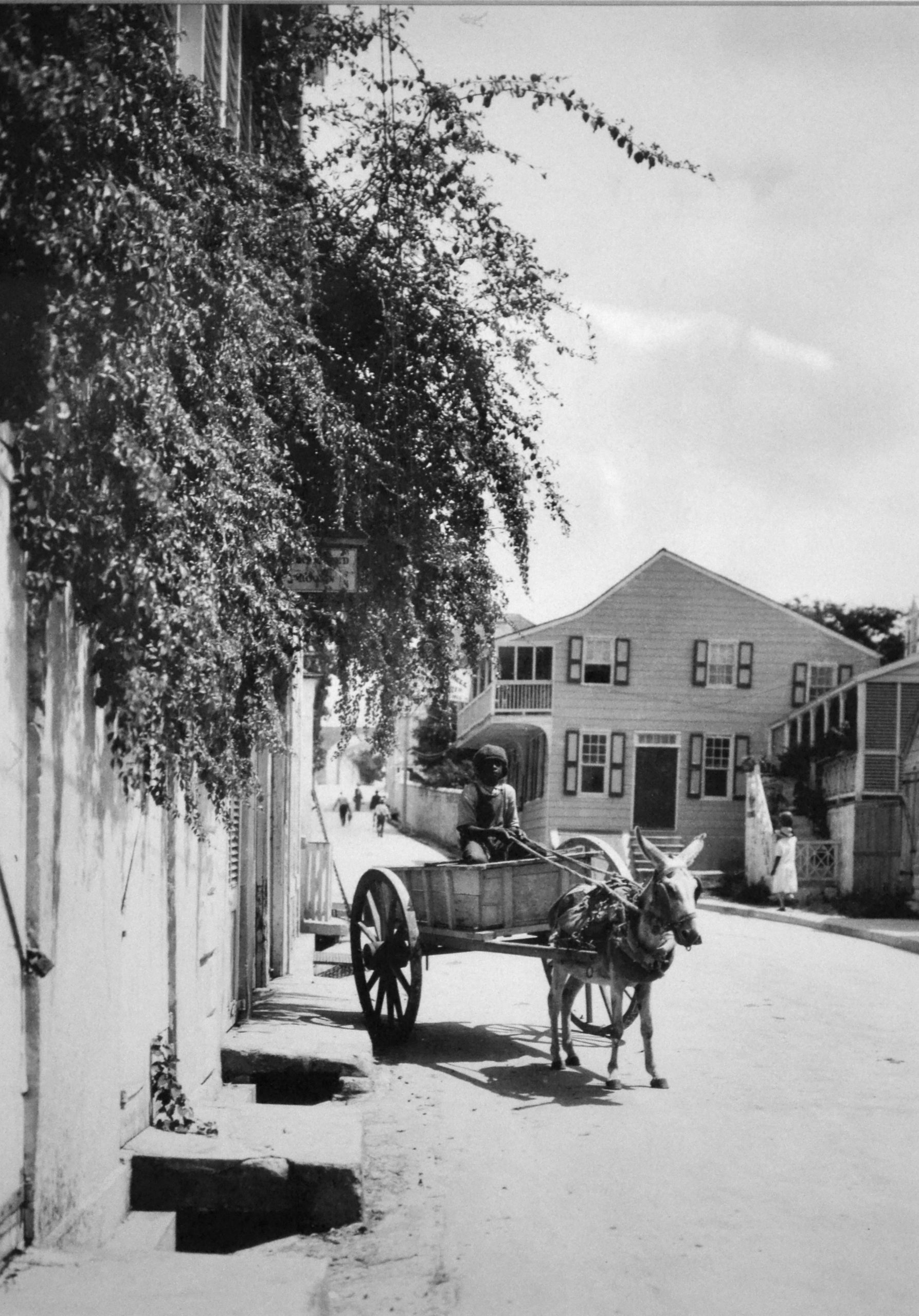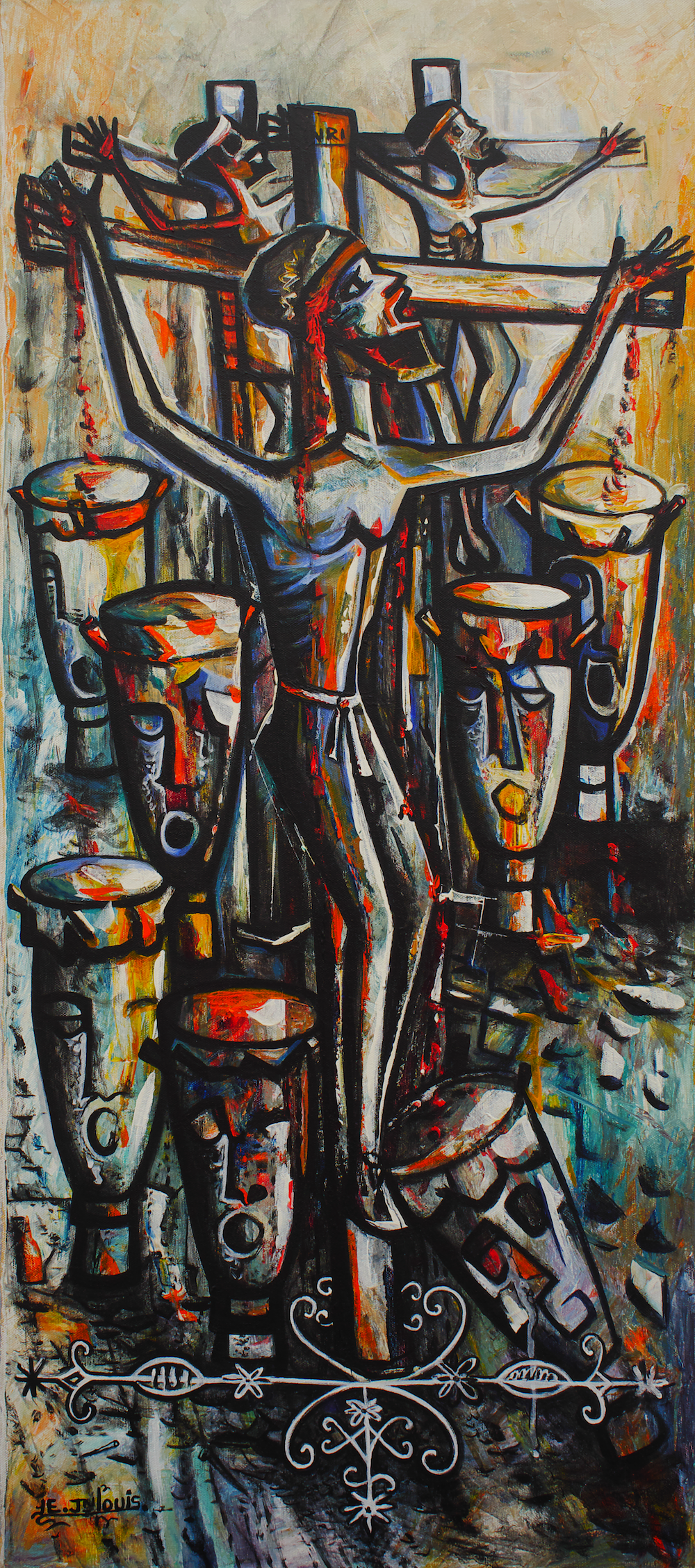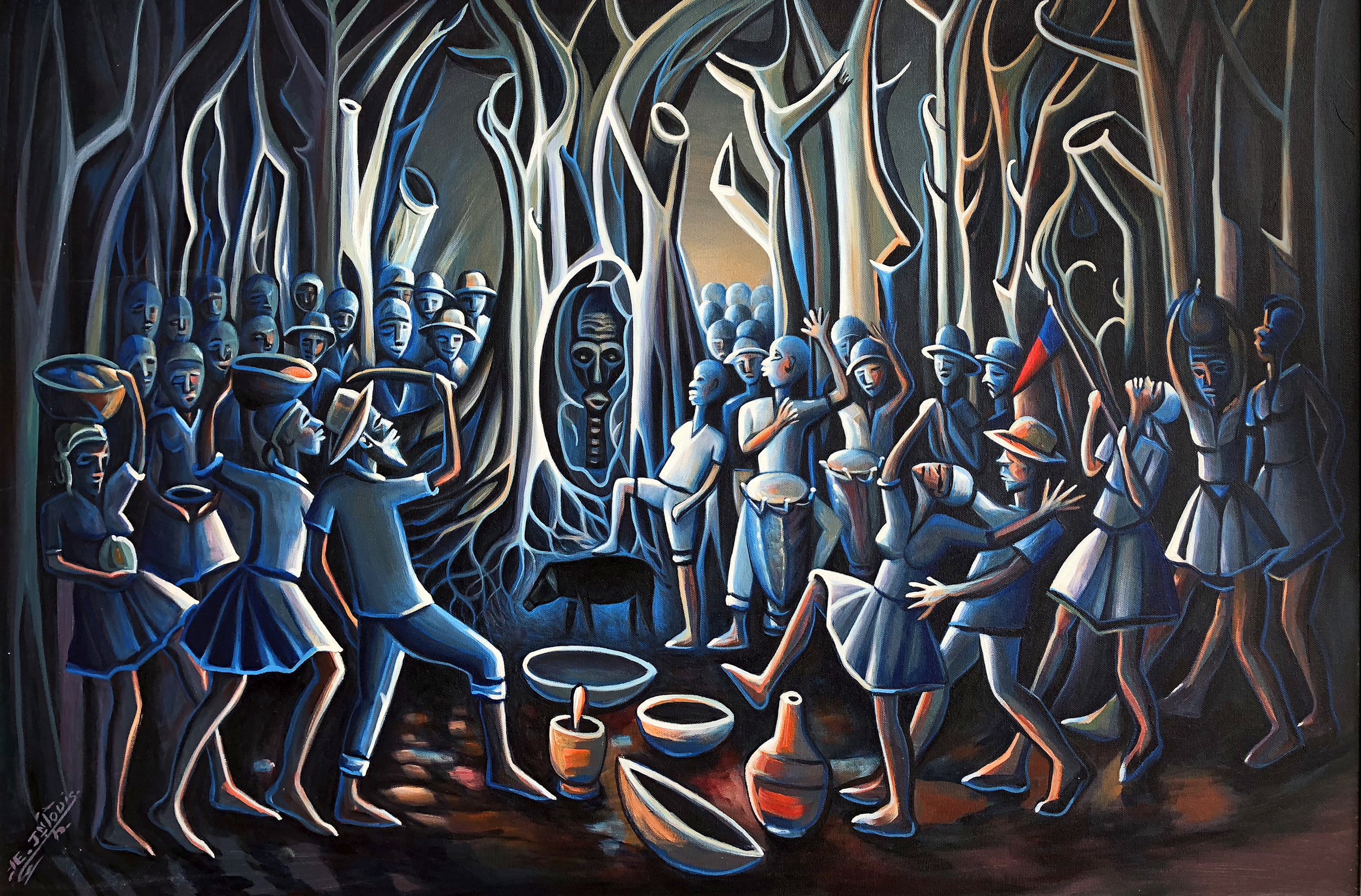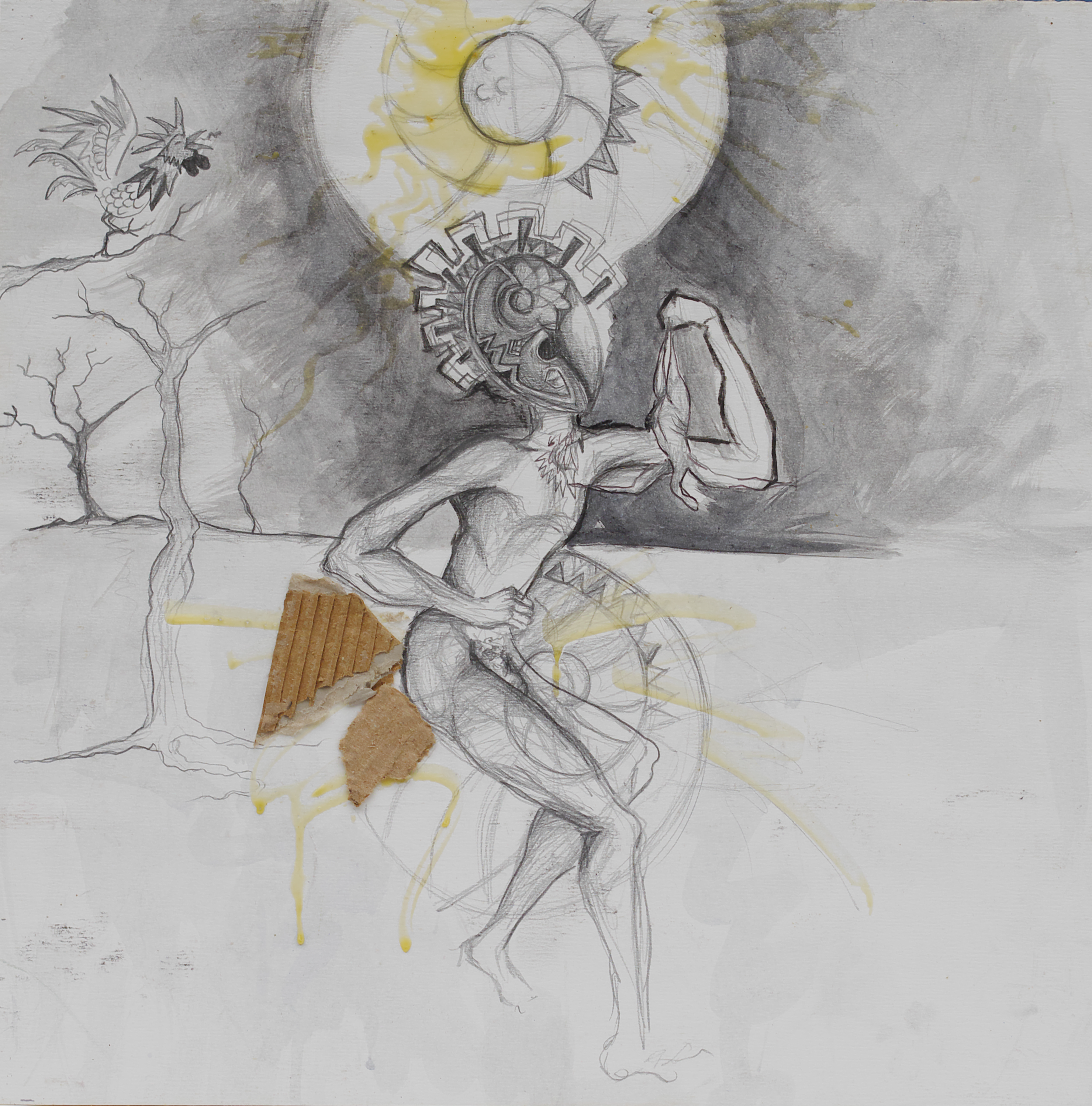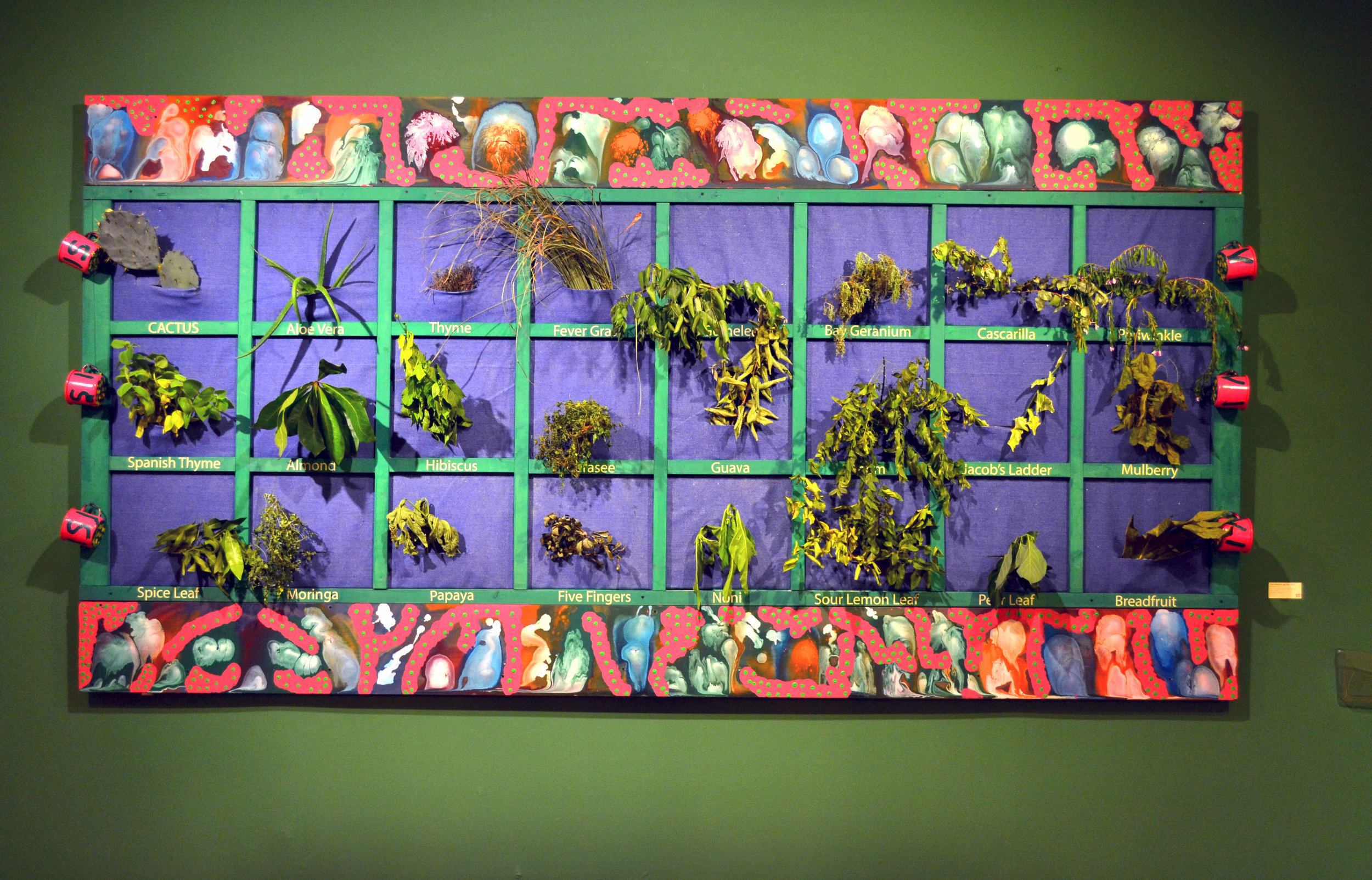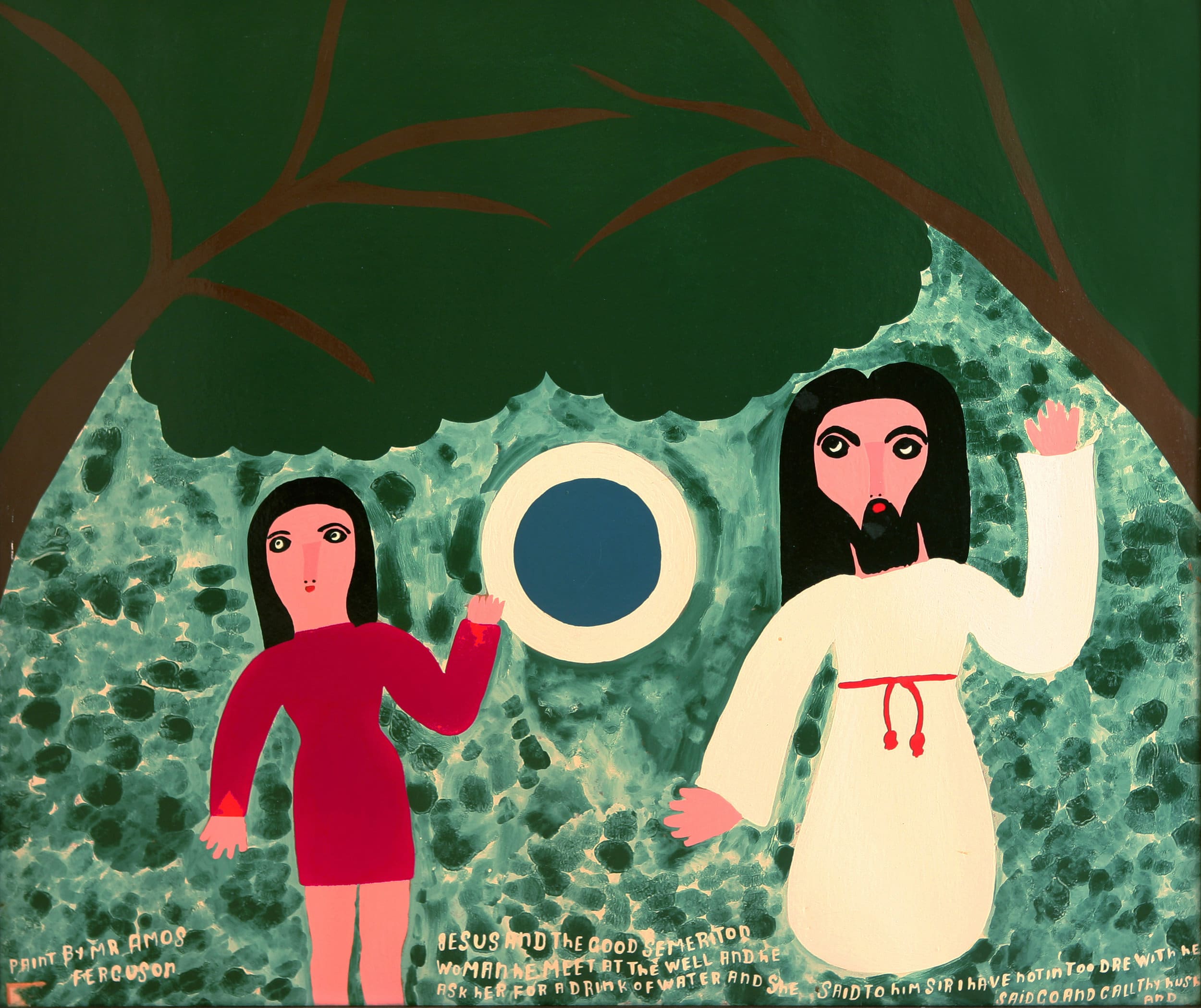By Natalie Willis. Rembrandt Taylor is truly a master of his craft. His meticulous attention to lines and cell-shaded blocks of colour is testament to his skill. His body of artwork generally contain references to Exodus, to Black kings and queens, to religion, and his beliefs as Rastafari are clear and given deference. The religious and social movement, which began in the 1930s in Jamaica, gives rich territory for explorations of faith and identity, of self, and Taylor doesn’t shy away from re-framing the conversation to suit his roots.
In this vein of celebration of Black histories of faith, “Defender of the Faith” (2001)—depicting St. George slaying the mythical dragon—would seem to be something of a contradiction. Why on Garvey’s green earth would a Rasta paint the patron saint of England in such detail? The image is iconic in art history, and the story is popular not just in England but across Europe – oddly enough, particularly in Russia and Georgia. Saint George, in Georgia, who’d have thunk it?

